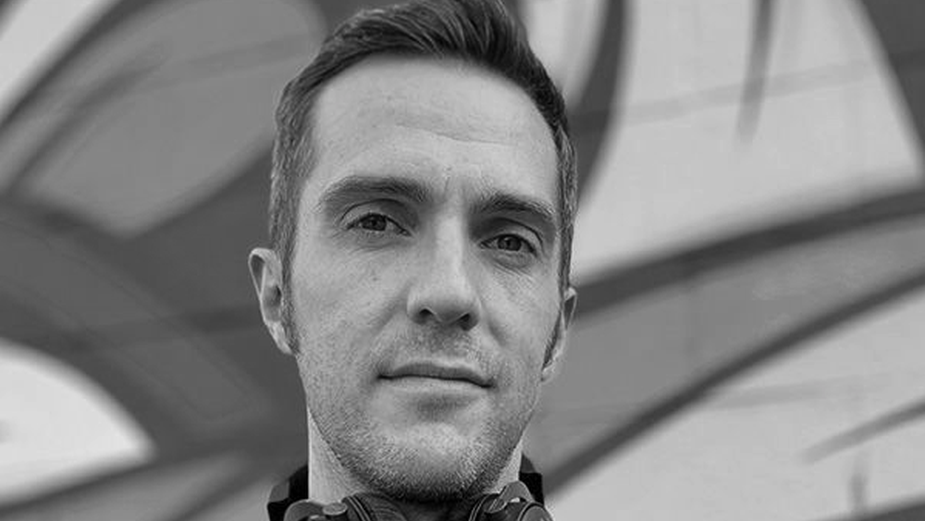
Sonic Boom: Jeff Dittenber on How Dolby Atmos Changed the Game

With degrees in music technology and guitar performance, Jeff Dittenber has a natural ear and passion for all things sound. But, his favorite thing to do is twist and mangle those sounds into new sonic sculptures. Based out of Yessian’s Detroit studios, Jeff leads the sound design teams for global projects in broadcast television, commercials, themed entertainment, experiential, immersive audio, VR, and live shows. He has done countless projects for brands like Sony, Google, Dolby, NBC, Universal Studios, Ferrari World, Dubai Parks, Ford, Mercedes, General Motors, and his most recent immersive collaboration with Aerosmith for their Las Vegas residency. Winning multiple awards that include Cannes Lions, London International, Tellys, ADDYs, Shots, and the coveted THEA award for themed entertainment, Jeff has been making his sonic mark in a wide variety of media channels across the globe.
LBB> First of all give us an introduction to both what you have chosen to focus on and WHY it’s so exciting to you personally as someone working in sound.
Jeff> The past decade has given us an incredible array of advancements in the world of audio that unlocks the creative door for sound designers and content creators. I think one of the most significant advancements is the invention of the Dolby Atmos platform.
This is a platform that was unveiled by Dolby in 2012 with the cinema release of the film Brave. Not only did this explode the mold of 7.1 surround sound, but it also inspired a whole new era of sound production that is referred to as “immersive audio”.
The best way you can describe Dolby Atmos, is that the listener is sitting under a dome of speakers, where sounds can virtually come from anywhere; the front, the side, behind, and above. To put it into perspective, 7.1 was an 8 channel format, while Dolby Atmos can be up to 128 channels.
What’s the point? To create the most realistic and immersive audio experience possible. As a sound designer, I have far more reach and power to guide you through the experience. I can literally put you in the middle of any scene imaginable. This dramatically widens the scope of what sound designers can create to deepen the experience and manipulate the emotional impact. Really, kind of a game changer if you ask me.
Dolby isn’t the ONLY company to create immersive platforms. However, they are the one who standardised their technology to become a household name which not only covers the world of cinema, but now spans into home theatre, video games, consumer electronics, smart phones, and now major label music releases. Dolby set the stage, and the creative world followed.
LBB> What past developments or innovations does Dolby Atmos build on?
Jeff> Dolby Atmos is a major leap from the previous 7.1 surround sound standard, but it also uses a very specialised technology called “object-based audio”. This is very similar to the idea of how virtual objects work in game engines where sounds are placed in a 3D space. In a nutshell, an audio “object” can move in 3D and that object motion is saved as metadata which then gets decoded at the playback device (cinema, home theatre, sound bar, etc..). This means that no matter what Dolby Atmos device you are playing back on, the placement of the audio will adapt to the speaker layout and be consistent from one device to another.
LBB> Tell us about some examples of this out in the real world and tell us why you think it's so exciting or interesting.
Jeff> Just about every action/adventure movie that has been released in the last decade has been created for Dolby Atmos. If you haven’t had the opportunity to experience it in a theater, you definitely should! But that is just the beginning. Dolby Atmos is now the new standard for major streaming platforms like Netflix, Apple TV+, Disney Plus, Amazon Prime, and HBO Max. You can install a massive in-home speaker system, or keep it simple and just grab an Atmos sound bar to be able to dig into this immersive space. And now, one of the most prolific developments is Dolby Atmos for Music.
New music is being released in Atmos weekly, and now classic records are being re-released in atmos. It’s as simple as streaming through Apple Music, Amazon HD, or Tidal. You can listen on a huge speaker system for a fully immersive experience, or simply put on a pair of headphones for a Binaural mix down, that still feels like you’re listening in surround. It’s completely scalable and adaptable. That’s the beauty of it!
LBB> Have you had the chance to work on a project that uses Dolby Atmos? What did you learn from that experience?
Jeff> Yes! We’ve been working in immersive audio for many years, and have completed numerous projects in Dolby Atmos. But a more recent opportunity I had, was to work on a project with SONY to promote their new HT-A7000 Dolby Atmos soundbar. We created an original soundtrack with both music and sound design for a 2-minute immersive experience, intended to show off the capabilities of their new system. The sound design was created to fully exploit the capabilities of Atmos, so we went big! Then we mixed the project in one of our 7.1.4 Atmos mixing rooms, and delivered back to SONY for them to distribute and showcase, worldwide. I’m always learning about new ways to make a sonic impact, and this project is no exception. What was interesting though, is that was the first brand-centric Atmos production we had done. It’s not just for film anymore!
LBB> For non-specialist readers, what are the technical aspects that we need to know about in order to grasp it?
Jeff> There are four key words that exemplify the importance of what Dolby Atmos (and other immersive platforms) can bring to the party: immersive, engaging, scalable, and assessable. If you look under the hood of the tech, it’s pretty complicated. But, if you look at what it does to the experience, and the creative possibilities it brings, it’s very clear. Dolby Atmos is intended to immerse you into the experience, which engages you to stay connected. The technology allows the speaker system to be scalable, from huge cinema rooms, all the way down to a simple pair of headphones. And since it’s now available in across multiple streaming platforms, it is very assessable. It’s all about reaching the user, and Dolby has cleared a lot of pathways to get there.
LBB> What are the challenges that you have to take into account when working with it?
Jeff> As with any new technology, there are two major hurdles: learning curve, and adoption. This new platform does have a bit of a learning curve, but I think it’s totally worth the investment of time. Adoption can sometimes be the most challenging part. It’s all about what the general public is drawn to. As we have seen with the ups and downs of the VR market, tech innovation markets can be volatile. But, with proper marketing and investment, this new immersive era has been extremely prolific, and will likely stay on the same trajectory.
LBB> Looking forward, what is the bigger picture for Dolby Atmos?
Jeff> More and more, brands are seeking out new avenues to reach their audience. Traditional marketing tactics can no longer be the sole backbone of a campaign. What is the ultimate goal of a brand? To leave an impact. I’m seeing brands look more and more to immersive experiences to do just that. Taking an alternate, non-conventional path to create a lasting impact, and give their message staying power. I definitely see immersive audio as being a major part of this level of thinking. It may even be a subconscious impression, but it’s an impression nonetheless. Not all broadcast platforms support this technology quite yet, but with more and more streaming becoming commonplace, I can see this immersive platform becoming the new standard. It’s always best to get ahead of it, before it gets ahead of you.













